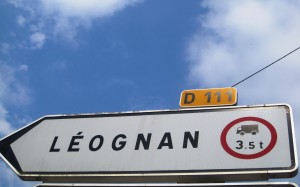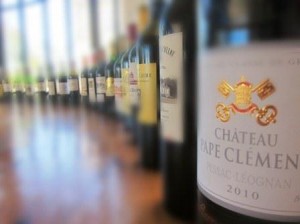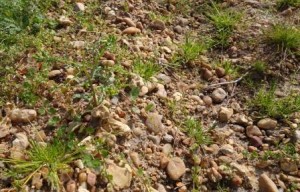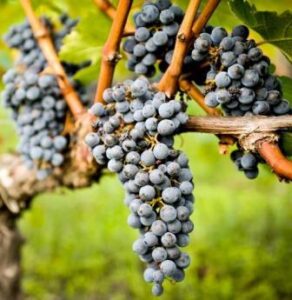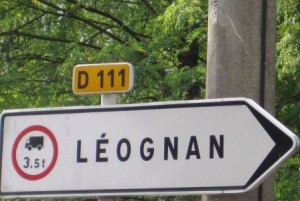Learn everything about Pessac Leognan, Bordeaux wine, in our complete guide, with the top ten facts of Pessac Leognan, a look at the character and style of all the best wines, complete profiles on all the top vineyards and producers with wine tasting notes, histories and buying guides for all the best wines along with wine and food pairing tips.
If you want to read about other Bordeaux wine producers in different Bordeaux appellations: Links to all Bordeaux Wine Producer Profiles If you are interested in learning more about Bordeaux wine, we offer numerous articles on everything about Bordeaux wine, from a history of the Bordeaux region and the famous 1855 Classification, the grapes used to produce Bordeaux wine and even vintage summaries, covering Bordeaux wine from 1900 to today: All About Bordeaux Wine Guide
The complete guide to all best chateau, wines, vineyards and producers in Pessac Leognan:
Map of Pessac-Léognan Vineyards and Chateau
- Bouscaut
- Branon
- Brown
- Carbonnieux
- Carmes Haut Brion
- Chevalier
- Clos Marsalette
- Couhins
- Couhins Lurton
- de Fieuzal
- de France
- Haut Bailly
- Haut Bergey
- Haut-Brion
- La Louviere
- Laville Haut Brion
- La Mission Haut Brion
- La Tour Haut Brion
- LaTour Martillac
- Larrivet Haut Brion
- Le Thil
- Liber Pater
- Malartic Lagraviere
- Olivier
- Pape Clement
- Le Pape
- Passion Haut Brion
- Smith Haut Lafitte
Overview of Pessac Leognan and Graves: The Graves, (the original name for the Pessac Leognan appellation) takes its name from the unique soils that consist of deep layers of gravel and stone. Below the gravel and pebble-filled surface, layers of sand, hardpan, and clay can be found.
But much of the terroir and thus, the character of the wines from this Bordeaux wine appellation is also shaped by the pine tree-laden forests that inhabit the region.
The trees assist in creating the unique, microclimate of the commune by protecting the vines from the humidity and winds. Another important consideration that makes Pessac Leognan different from all the other Bordeaux wine appellations is, that this is the only Bordeaux region making large quantities of world-class red and white Bordeaux wine.
To get an idea of how the soil and terroir of Pessac Leognan compare to the other important appellations in Bordeaux; The terroir and soil of Bordeaux In Pessac Leognan, the terroir is unique to all of Bordeaux due to the production of red and white Bordeaux wine.
For some vineyards, the soils can be a bit too warm for the white wine and slightly too cool for the red wine. This situation requires a lot of work and attention when it comes to the decision of when to harvest both red wine grapes and white wine grapes.
Classification of Graves, Pessac Leognan: With the exception of Chateau Haut Brion, which was classed in the 1855 Bordeaux Classification as a First Growth, the remaining producers from the Graves area were excluded from the original classification of 1855.
That situation was finally rectified in 1953 when the wines from the area of Graves were officially classified. Although it took several more years before the official 1959 Graves Classifications was finalized.
At the time of the classification, the chateaux in the area were considered a part of Graves, meaning this was well in advance of the creation of Pessac Leognan as a unique, separate AOC appellation. Pessac Leognan as an appellation was only created in September 1987.
History of Graves, Pessac Leognan: Graves is the area many wine historians cite as the appellation the Romans first planted with grapes to produce Bordeaux wine close to 2,000 years ago. Although the inhabitants of Margaux take exception to that. It’s amazing to consider that two thousand years ago, the Romans knew about the unique terroir in the region that would later become Pessac Leognan.
Wine from the Graves area was exported to some degree to England from 1152 to 1453. In about 1305, after Cardinal Bertrand de Goth was elected as the Pope, he was given a vineyard in the Graves area as a gift. The Pope renamed Clement V, was an avid wine lover who was interested in vineyard works and resided at the property before moving to Avignon. The chateau was renamed in his honor, Pape Clement.
Skipping ahead again, the most famous wine of the region, Chateau Haut Brion grew from the desires of the original owner, Jean de Pontac. It was Pontac who created the famous estate and vineyard by purchasing land on a parcel by parcel basis to create the vineyards.
Haut Brion was the first Bordeaux wine producer to export and promote their own brand when they opened a London tavern that served Haut Brion wine exclusively! That took place in 1660! By that time, the wine of Chateau Haut Brion was already famous. Since 1663, when Samuel Pepys first write about Chateau Haut Brion,
Samuel Pepys, was probably the Robert Parker of his day when he first He wrote in his diary: “Friday 10th April 1663… Here we drank a sort of French wine, called Ho Bryan, that hath a good and most particular taste that I never met with”. That comment makes Pepys the first wine critic as well as the first writer to mention Haut-Brion and the wines of Graves. Shortly after that, Haut Brion became immensely popular with wealthy wine consumers.
Because of the appellation’s geographical location, which is situated near the city center, the town of Pessac, and the Bordeaux airport in Merignac, the vineyard land has been reduced over the last century. To give you an idea, during the 1800’s close to 100 chateaux were located in Merignac. Today, most are gone.
This took place because the price for land that could be used for commercial applications was much more than the growers could make with their wineries. That trend continued when demand boomed for offices, housing, and shopping centers which gave some growers the incentive to sell their vineyards to developers. Yet, even with that consideration, Pessac Leognan has gotten bigger.
Close to 500 hectares were under vine in 1975. Today, Pessac Leognan has 1,199 hectares under vine! Roughly, 967 hectares are planted for the production of red wine, and 267 hectares are reserved for making white wine in Pessac Leognan. In total, the area becomes considerably larger when you consider that Graves covers an additional 3,098 hectares!
Graves is planted on 2,296 hectares for red wine grapes and 802 hectares for white Bordeaux wine varieties. The Pessac Leognan appellation produces close to 8 million bottles of Bordeaux wine per year, which is almost 665,000 cases of wine per year.
557,000 cases of those wines are red wine. That is equal to about 3% of all the red wine produced in Bordeaux each year. The remaining 108,000 cases are made of white Bordeaux wine.
The Top Ten Facts you need to know about Pessac Leognan
#1 Pessac Leognan is the most recent creation among the major Bordeaux appellations. It was created in 1987.
#2 Pessac Leognan is known for producing stunning, dry white Bordeaux wines, as well as red Bordeaux wine. 20% of the Pessac Leognan appellation is dedicated to producing white Bordeaux wine.
#3 Pessac Leognan is the only important Bordeaux appellation located inside a city.
#4 Pessac Leognan is the sole appellation outside of the Medoc to have a chateau classified in the 1855 Classification. Chateau Haut Brion was granted First Growth status.
#5 Pessac Leognan, which was named Graves at that point, created its own classification in 1959 for red and white wines. Interestingly, Haut Brion Blanc, the finest white wine in the appellation was not classified.
#6 Pessac Leognan, Graves is thought to be the area where the ancient Romans first planted vines in Bordeaux.
#7 Graves, Pessac Leognan takes its name from the gravel soils found in the region.
#8 Pessac Leognan has the hottest, micro-climate of any of the major Bordeaux appellations and is usually the first to start harvesting.
#9 Pessac Leognan has 1,199 hectares under vine. In total, the area becomes considerably larger when you consider that Graves covers an additional 3,098 hectares! Combined, this represents 3% of all the red wine produced in Bordeaux in an average vintage.
#10 Haut Brion lays claim to being the first Bordeaux wine to earn a professional review when the wine was written about by Samuel Pepys, Friday, April 10, 1663.
The terroir and soil of Pessac Leognan: Pessac Leognan, like all the Bordeaux appellations has a unique terroir. First off, the region is hotter than the other major appellations, with the high-temperature situation being exacerbated due to the increased heat from the local industry that takes place as the region is situated close to city areas.
For the red wine, the best vineyards have terroir with large deposits of gravel, quartz, pebbles, and rocks of various shapes and sizes. The terroirs can also feature blends of gravel, rocks, and stones with sand, clay, and hardpan soil with various depths of gravel deposits in the soil.
The vineyards can be planted in soils with sloping hillsides. The elevations in Pessac Leognan range from 3 meters to 60 meters. The high point in the Pessac Leognan is at Domaine de Chevalier, which rises up to 60 meters high at its peak.
It is also important to note that each of the communes enjoys varying degrees of temperature that allow for differences in the levels of ripeness, alcohol, and picking dates. For example, Talence is warmer and there, the vineyards are picked earlier than Pessac, while Martillac harvests after Leognan.
It is interesting to note that climate change has affected Pessac Leognan, which is becoming increasingly warmer. In fact, 2022 is the earliest start date for harvesting in the appellation. 2022 is also the first vintage where some vintners requested and were able to irrigate select vines in various parcels, due to the hot and extremely dry conditions.
For the white wine, the grapes are planted in terroirs that most often combine clay and large deposits of limestone, with only minor amounts of gravel in the cooler terroirs of the appellation. A large amount of forest land in the region also plays a significant role in the terroir.
In large part, the combination of the percentages of grape varieties cultivated and the terroir is what determines The difference between the wines of the Left Bank and those from the Right Bank.
Pessac Leognan wine styles, taste, and character: The red wines from Pessac Leognan and Graves are produced in a myriad of styles ranging from simple wines meant to be enjoyed in their youth to full-bodied, rich, elegant wines redolent of smoke, tobacco, cassis, dark cherry, leather, tar and truffle flavors with textures of silk and velvet. The best red Pessac Leognan can age for decades, and in some cases over 100 years!
The white Bordeaux wine from Pessac Leognan is rich, fresh, lively, and often displays pronounced citrus, lemon, grapefruit, lime, green apple, flowers, honey, wax, and mineral characteristics. They range in levels of concentration and the ability to age.
There are several white Bordeaux wines from Pessac Leognan meant to be enjoyed young. However, the top white wines from chateau like Haut Brion and Domaine de Chevalier can age and evolve for 50 or more years! Also, it’s important to note that there are many vintages when the white and red wines produce completely different levels of quality.
Most recently: 2017, 2013, 2011, and 2007 are good examples of difficult years for red wines, but outstanding vintages for white wine. During the vinification of white Pessac Leognan wine, most of the time, there is no contact with the skins and most estates’ do not allow the wines to go through malolactic fermentation.
At the top estates, in many cases, white Bordeaux wines are also barreled fermented. The production of dry white Bordeaux wine in Pessac Leognan is limited.
On average, Pessac Leognan produces 108,000 cases of white Bordeaux wine and the Graves appellation, which has 802 hectares planted for white wine produces 390,000 cases of wine each vintage.
While increases in quality are always matched with rising prices, Pessac Leognan remains one of the most important appellations for Bordeaux value wine lovers to consider. Numerous small estates are making very fine wines that sell for $30 and less, for both red and white Bordeaux wine from Pessac Leognan. Plus many of these wines are often delicious in the youth.
If you are going to visit the chateaux and vineyards in Pessac Leognan, you should also read these 2 articles to help you better plan your trip: Where to Eat when visiting Pessac Leognan and Bordeaux as well as Guide to the best hotels and other places to stay in Pessac Leognan and Bordeaux
Red wine grapes of Pessac Leognan: The red wines from Graves Pessac Leognan are some of the finest wines in the world. Thomas Jefferson, the third President of the United States considered the wines of Chateau Haut Brion to be special. Three centuries later, that is still the case.
The red grapes used in the red Bordeaux wine from Pessac Leognan are mostly Cabernet Sauvignon, Merlot, and Cabernet Franc. However, there are also small plantings of Malbec and Carmenere as well. With increasing temperatures, some vineyard owners have been adding more Cabernet Sauvignon at the expense of Merlot over the past several years.
Pessac Leognan red wine and food pairings: Red Pessac Leognan wines are perfect for a wide variety of wine and food pairings. In Bordeaux, lamb and Pessac Leognan wine is one of the most popular wine and food matching ideas. However, any grilled, braised, or stewed course with beef, duck, pork, veal, or game dish is perfect.
Fish is also popular with red Bordeaux wine, depending on how the dish was prepared. With the smoke and truffle character found in the wines, dishes with mushrooms and other earthy components make great wine and food pairings with Pessac Leognan wine. Cheese is also perfect with wine from the appellation.
White wine grapes of Pessac Leognan: Sauvignon Blanc and Semillon are the most important grapes used for the region’s dry white Bordeaux wine. However, Muscadelle and Sauvignon Gris are planted in vineyards as well.
The white wines of Pessac Leognan are produced in a wide range of styles ranging from light with citrus character to stellar expressions of terroir with complex perfumes of flowers, citrus, spice, minerals, and honey.
The best white wines from the region can age for decades. The white wine from Pessac Leognan represents close to 10% of all white wine produced in the appellation.
Pessac Leognan white wines with food: White Bordeaux wine is quite food-friendly and make for great wine and food pairings. White Bordeaux wine is perfect for a wide variety of dishes and cuisines.
Due to its fresh, citrus profile along with sweet fruits, spice, and mineral characteristics, most seafood dishes make perfect pairings. Chicken, veal, pork, sushi, Crudo, and semi-spicy dishes are great matches for white Bordeaux wine.
Most cheeses will also offer great wine and food pairings when served with white Bordeaux wine. White Bordeaux wine will taste and feel far better with a slight chill. 55 to 60 degrees Fahrenheit which is about 15 degrees Celsius really adds a lot to the tasting experience.
The best vintages of Pessac Leognan are: 2023, 2022, 2021, 2020, 2019, 2018, 2017, 2016, 2015, 2014, 2012, 2010, 2009, 2008, 2006, 2005, 2001, 2000, 1998, 1996, 1995, 1990, 1989, 1985, 1982, 1961, 1959, 1955, 1953, 1949, 1948, 1945, 1929, 1928, 1926, 1921 and 1900.
However for Pessac Leognan, like many things, it’s not quite that simple. There are several vintages in recent years that were not as successful for the red wines, as they were for the white wines. For example; 2013, 2011, and 2007 have been stunning for the white wines, but quite mixed for the red wines.
To read about vintages from Pessac Leognan and all the other Bordeaux appellations Bordeaux Vintage Charts 1959 Through Today If you are interested in reading more detailed information on other vintages for Pessac Leognan and all the top Bordeaux appellations, please read: Bordeaux Year to Year Detailed Vintage Reports 1900 to Today
Pessac Leognan in the modern era: Prior to 2000, as you might expect, Chateau Haut Brion and Chateau La Mission Haut Brion ruled the roost. Of course, that is still the case today. But starting with the 2000 vintage, the entire appellation, like all the regions of Bordeaux began experiencing a renascence in quality. Things really changed with the 2005 vintage. That year, Pessac Leognan made the announcement they were serious about producing wines of stunning quality.
While it’s no surprise to note that Chateau Haut Brion and Chateau La Mission Haut Brion continue on top of their game, Chateau Haut Bailly, Chateau Smith Haut Lafitte, Domaine de Chevalier, Chateau Malartic Lagraviere, and others began making wine at the level not seen before in the appellation! All those chateaux and others continue striving to make wines as good or better than they have before. This is a positive development for consumers.
AOC Law and rules for Pessac Leognan: The creation of the Pessac Leognan can be easily viewed as a new level of classification. After all, the producers included in the new appellation were selling the most expensive wines from Graves.
The idea for the Pessac Leognan appellation came from Andre Lurton, who owned numerous vineyards in the northern Graves. The birth of the idea started in 1964, with an initial group of 60 chateaux who created their own, new syndicate. Andre Lurton, the president of the new group brought the proposal to the INAO in 1980. By 1984, chateaux were placing both Pessac Leognan and Graves on their labels.
3 years later, the Pessac Leognan appellation became officially recognized. Aside from allowing consumers an easy understanding that the wines from Pessac Leognan were more prestigious, a few minor changes took place in the new AOC laws. For example, higher vine density plantings were mandated and the amount of Sauvignon Blanc for the white wines was increased to at least a minimum of 25% of the blend.
Of course, it’s easy to see the best wines in the appellation truly come from Pessac Leognan. For the chateaux owners, consumers quickly began paying more money for Pessac Leognan wines and less for the wines of Graves. That trend continues today.
You can also read detailed information about other, smaller chateaux, wines, and vineyards located in Pessac Leognon and Graves, as well as in other appellations here: Extensive Guide to the Smaller, Lesser Known Bordeaux Chateaux, Vineyards

